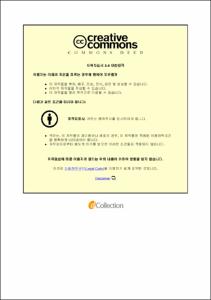자동 - 유인 병행 작업 환경을 고려한 수직형 컨테이너 터미널 이송모델 연구
- Abstract
- With invention of ocean container box, stevedoring time for container liner vessels have been drastically shortened. As containerization continues, port stevedoring changed from human labor to mechanization throughout 1980s and ports operations evolving again from mechanization based to automation enhancing operation productivity for minimizing vessels’port stay as carriers’demand for better productivity increases with deployment of ever larger container vessel.
This study is on container terminal automation of Port of Busan South Korea. Currently Busan Port terminals are in semi automation status, and studying on implementation of fully automated container terminal operation model. This study looks into perpendicular layout container terminal model which is the most common type of terminal automation model all around the world. Based on perpendicular layout container terminal, the study will propose adjusted perpendicular layout model reflecting Busan terminal’s operational job scope. As a hub port of North East Asia, Busan Port’s container traffic within terminal area is highly complex, covering various container flow including laden export, import, transshipment and empty container flow under the name of ‘on dock service’ as additional service / job scope in addition to basic stevedoring work.
The suggested transport model named‘interchange area’will facilitate combination of Semi and Full Automation of container terminal operation, becoming an alternative perpendicular layout container terminal model reflecting Korea container terminal’s operational differentiation factors.
본 연구는 부산항의 자동화를 주제로 현재 야드 자동화 단계인 반자동화 이후 이송장비 자동화를 포함하는 완전자동화 운영단계를 가정, 서구의 일반적인 수직배열 컨테이너 터미널의 한계점을 부산항의 항만 처리물동량 구조 및 개별 터미널의 서구와 비교되는 업무영역의 상이함을 중심으로 살펴보고 서구형 수직배열 컨테이너 터미널의 부분적 개선을 통해 한국의 항만 실정에 적합한 완전자동화 모델을 제안 하는데 연구의 주요한 목적이 있다. 본 연구에서 제안된 자동/유인 병행작업 환경을 고려한 이송모델(인터체인지 모델)은 향후 수직배열 컨테이너 터미널 모델에 기반한 부산항의 완전자동화 터미널 도입 시 국내 항만실정을 반영한 대안적 수직배열 자동화 모델이 될 것으로 기대한다.
- Issued Date
- 2019
- Awarded Date
- 2019. 2
- Type
- Dissertation
- Publisher
- 부경대학교
- Affiliation
- 부경대학교 경영대학원
- Department
- 경영대학원 국제통상물류학과해운항만관리전공
- Advisor
- 이정윤
- Table Of Contents
- 표 목차 ⅲ
그림 목차 ⅴ
Abstract ⅶ
Ⅰ. 서론 1
1. 연구 배경 및 목적 1
2. 연구 방법 및 구성 4
Ⅱ. 선행 연구 분석 6
1. 자동화 컨테이너 터미널 운영 효율 제고 및 최적화 연구 6
2. 자동화 컨테이너 터미널 경제성 분석 연구 7
3. 자동화 컨테이너 터미널 개발 운영모델 연구 8
Ⅲ 자동화 컨테이너 터미널 11
1. 컨테이너 터미널의 자동화 단계 및 일반구조 11
2. 자동화 컨테이너 터미널의 도입 배경 14
3. 주요 선진 항만의 터미널 자동화 추세 및 현황 16
Ⅳ. 자동-유인 병행 작업 환경을 고려한 수직형 컨테이너 터미널 이송모델 20
1. 수평형, 수직형 컨테이너 터미널 이송모델 비교 20
2. 부산항 컨테이너 터미널 운영 서비스 특성 22
3. 부산항 컨테이너 터미널 완전 자동화 도입 시 문제점 26
Ⅴ. 자동-유인 병행 작업 환경(인터체인지)을 고려한 수직형 컨테이너
터미널 이송모델의 기대효과 36
1. 자동-유인 병행 작업 환경(인터체인지)을 고려한 수직형 컨테이너
터미널 이송모델 제안 36
가. 기본모델 (SC Type) 39
나. 기본모델 (AGV Type) 41
다. 확장모델 (SC / AGV Type) 44
라. 이송장비 소요분석 47
2. 공컨테이너 분리 운영 효과분석 52
3. 인접 터미널 통합 / 협력을 고려한 인터체인지 영역 활용 효과 70
Ⅵ. 요약 및 결론 73
1. 연구결과 요약 73
2. 연구 시사점 및 향후 과제 76
참고문헌 79
- Degree
- Master
- Appears in Collections:
- 경영대학원 > 국제통상물류학과-해운항만관리전공
- Files in This Item:
-
-
Download
 자동 - 유인 병행 작업 환경을 고려한 수직형 컨테이너 터미널 이송모델 연구.pdf
기타 데이터 / 4.54 MB / Adobe PDF
자동 - 유인 병행 작업 환경을 고려한 수직형 컨테이너 터미널 이송모델 연구.pdf
기타 데이터 / 4.54 MB / Adobe PDF
-
Items in Repository are protected by copyright, with all rights reserved, unless otherwise indicated.